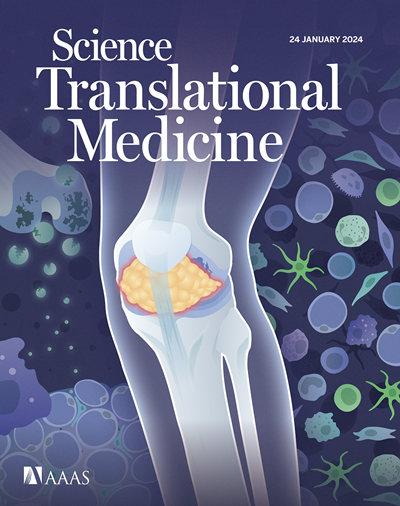An autoimmune transcriptional circuit drives FOXP3+ regulatory T cell dysfunction
IF 14.6
1区 医学
Q1 CELL BIOLOGY
引用次数: 0
Abstract
Autoimmune diseases, among the most common disorders of young adults, are mediated by genetic and environmental factors. Although CD4+FOXP3+ regulatory T cells (Tregs) play a central role in preventing autoimmunity, the molecular mechanism underlying their dysfunction is unknown. Here, we performed comprehensive transcriptomic and epigenomic profiling of Tregs in the autoimmune disease multiple sclerosis (MS) to identify critical transcriptional programs regulating human autoimmunity. We found that up-regulation of a primate-specific short isoform of PR domain zinc finger protein 1 (PRDM1-S) induces expression of serum and glucocorticoid-regulated kinase 1 (SGK1) independent from the evolutionarily conserved long PRDM1, which led to destabilization of forkhead box P3 (FOXP3) and Treg dysfunction. This aberrant PRDM1-S/SGK1 axis is shared among other autoimmune diseases. Furthermore, the chromatin landscape profiling in Tregs from individuals with MS revealed enriched activating protein–1 (AP-1)/interferon regulatory factor (IRF) transcription factor binding as candidate upstream regulators of PRDM1-S expression and Treg dysfunction. Our study uncovers a mechanistic model where the evolutionary emergence of PRDM1-S and epigenetic priming of AP-1/IRF may be key drivers of dysfunctional Tregs in autoimmune diseases.
自身免疫转录回路驱动 FOXP3+ 调节性 T 细胞功能失调。
自身免疫性疾病是青壮年最常见的疾病之一,由遗传和环境因素介导。虽然 CD4+FOXP3+ 调节性 T 细胞(Tregs)在预防自身免疫方面发挥着核心作用,但其功能障碍的分子机制尚不清楚。在这里,我们对自身免疫性疾病多发性硬化症(MS)中的Tregs进行了全面的转录组学和表观基因组学分析,以确定调控人类自身免疫的关键转录程序。我们发现,PR结构域锌指蛋白1(PRDM1-S)的灵长类特异性短异构体上调会诱导血清和糖皮质激素调节激酶1(SGK1)的表达,而不依赖于进化保守的长PRDM1,这导致了叉头盒P3(FOXP3)的不稳定和Treg功能障碍。这种异常的 PRDM1-S/SGK1 轴在其他自身免疫性疾病中也存在。此外,对多发性硬化症患者Tregs的染色质图谱分析表明,活化蛋白-1(AP-1)/干扰素调节因子(IRF)转录因子结合丰富,是PRDM1-S表达和Treg功能障碍的候选上游调节因子。我们的研究揭示了一个机制模型,在该模型中,PRDM1-S的进化出现和AP-1/IRF的表观遗传引物可能是自身免疫性疾病中Tregs功能障碍的关键驱动因素。
本文章由计算机程序翻译,如有差异,请以英文原文为准。
求助全文
约1分钟内获得全文
求助全文
来源期刊

Science Translational Medicine
CELL BIOLOGY-MEDICINE, RESEARCH & EXPERIMENTAL
CiteScore
26.70
自引率
1.20%
发文量
309
审稿时长
1.7 months
期刊介绍:
Science Translational Medicine is an online journal that focuses on publishing research at the intersection of science, engineering, and medicine. The goal of the journal is to promote human health by providing a platform for researchers from various disciplines to communicate their latest advancements in biomedical, translational, and clinical research.
The journal aims to address the slow translation of scientific knowledge into effective treatments and health measures. It publishes articles that fill the knowledge gaps between preclinical research and medical applications, with a focus on accelerating the translation of knowledge into new ways of preventing, diagnosing, and treating human diseases.
The scope of Science Translational Medicine includes various areas such as cardiovascular disease, immunology/vaccines, metabolism/diabetes/obesity, neuroscience/neurology/psychiatry, cancer, infectious diseases, policy, behavior, bioengineering, chemical genomics/drug discovery, imaging, applied physical sciences, medical nanotechnology, drug delivery, biomarkers, gene therapy/regenerative medicine, toxicology and pharmacokinetics, data mining, cell culture, animal and human studies, medical informatics, and other interdisciplinary approaches to medicine.
The target audience of the journal includes researchers and management in academia, government, and the biotechnology and pharmaceutical industries. It is also relevant to physician scientists, regulators, policy makers, investors, business developers, and funding agencies.
 求助内容:
求助内容: 应助结果提醒方式:
应助结果提醒方式:


